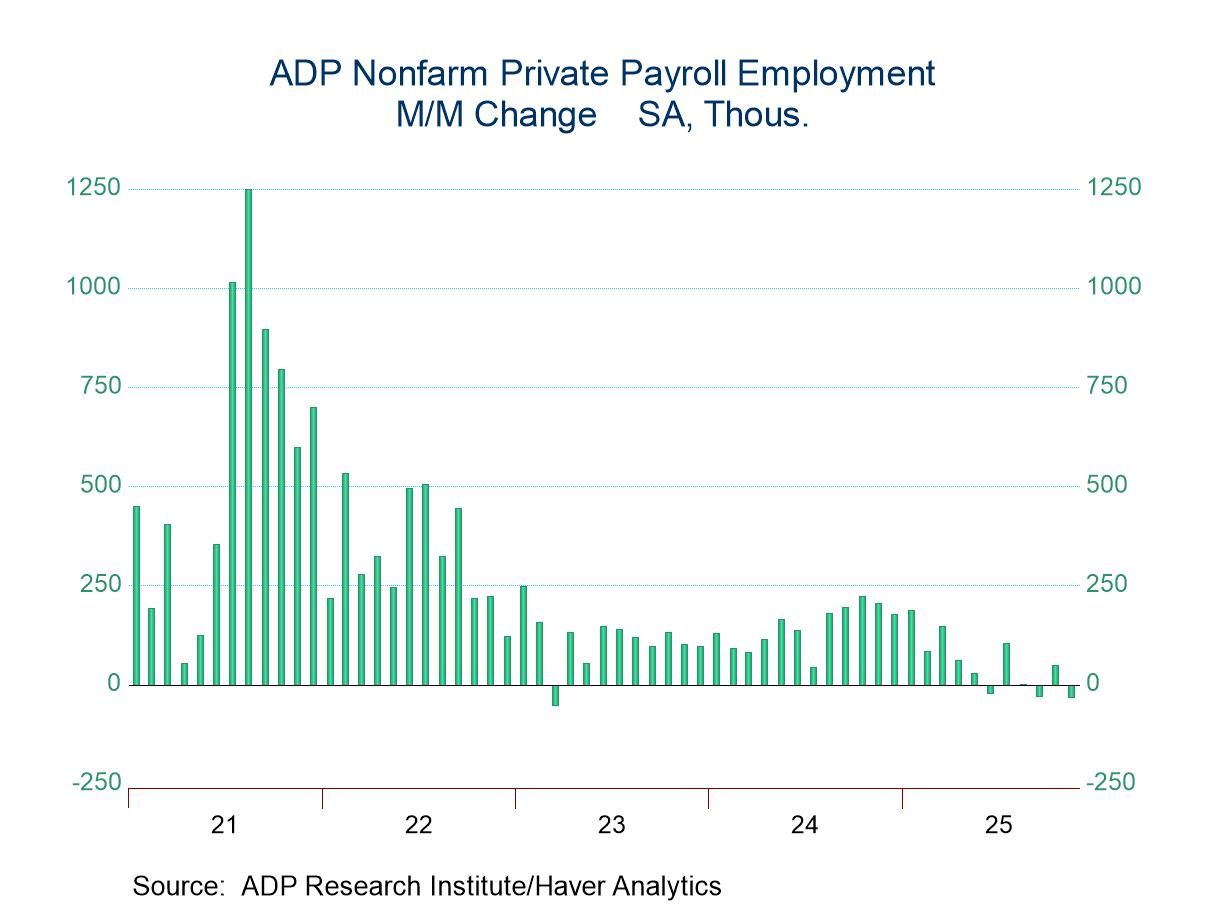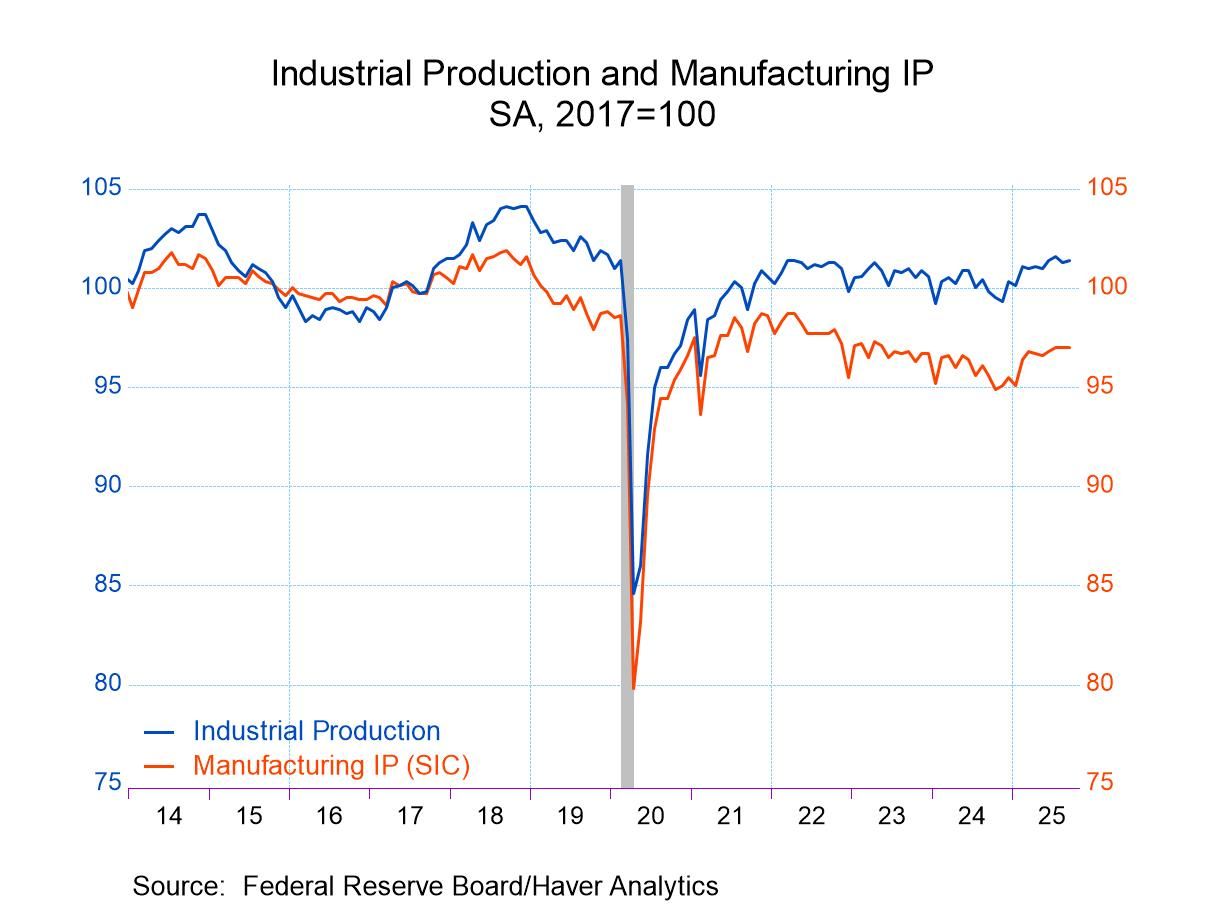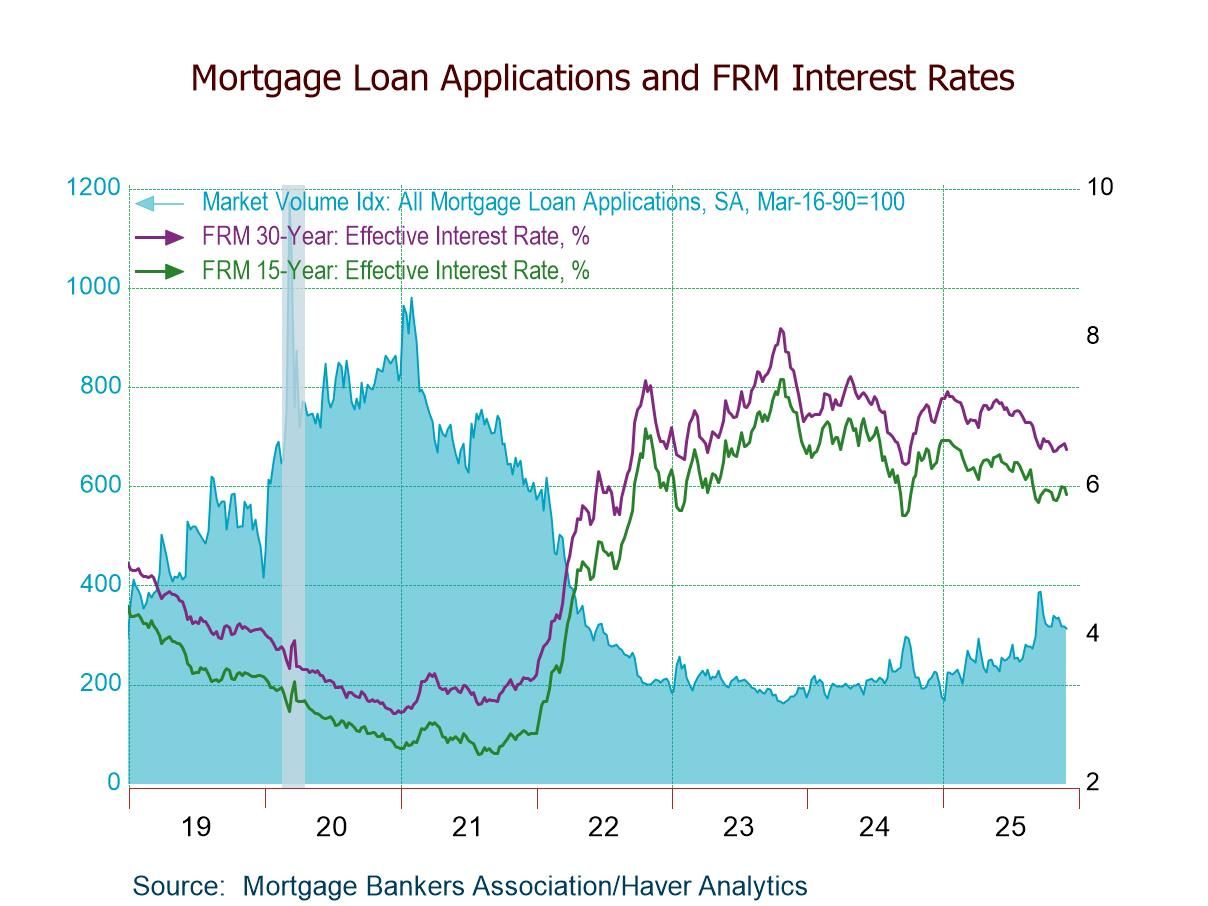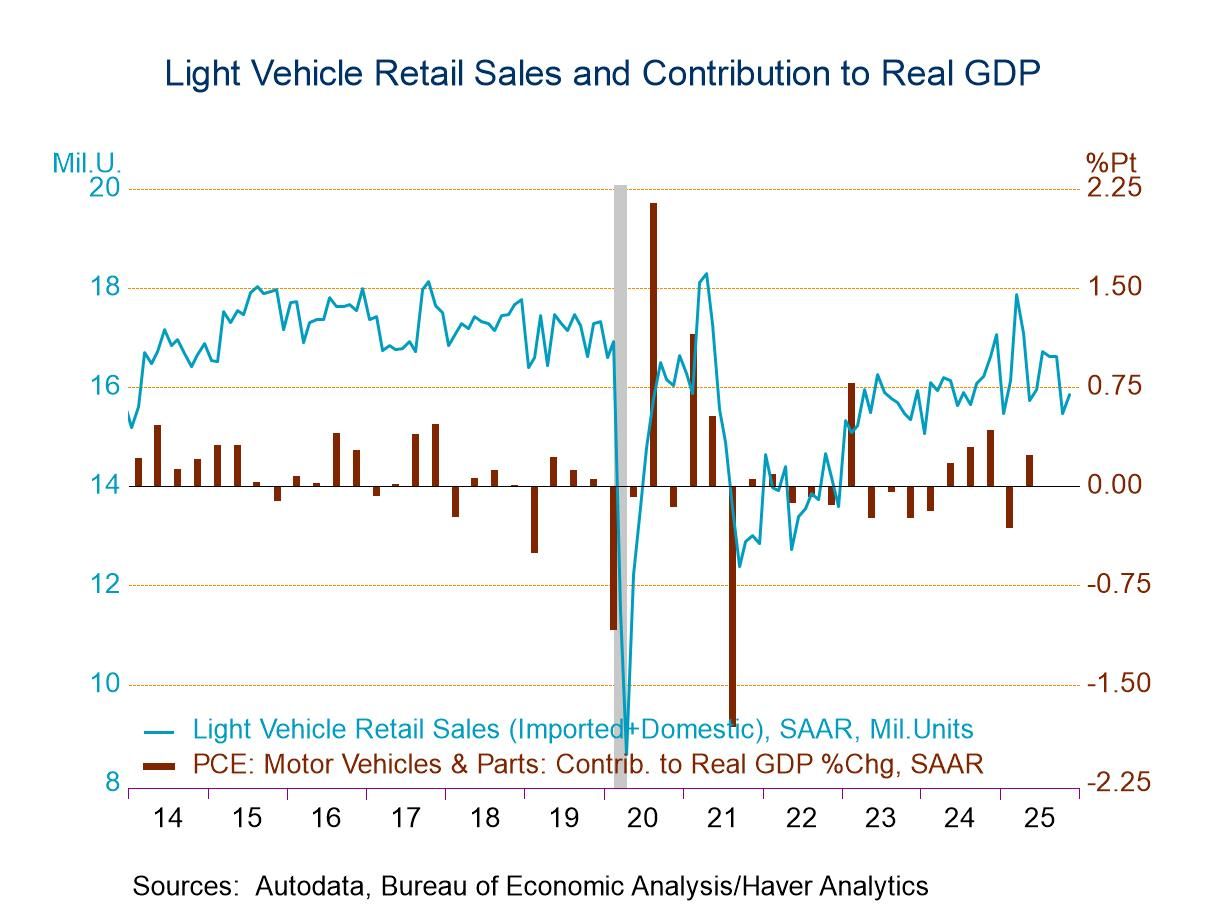U.S. Import Prices Rebounded in July
by:Sandy Batten
|in:Economy in Brief
Summary
- Import prices rose 0.4% m/m in July against expectations of no change after declines in both May and June.
- Higher prices for imported petroleum and natural gas drove the July rebound.
- Export prices ticked up 0.1% m/m, largely reflecting higher prices for nonagricultural exports.
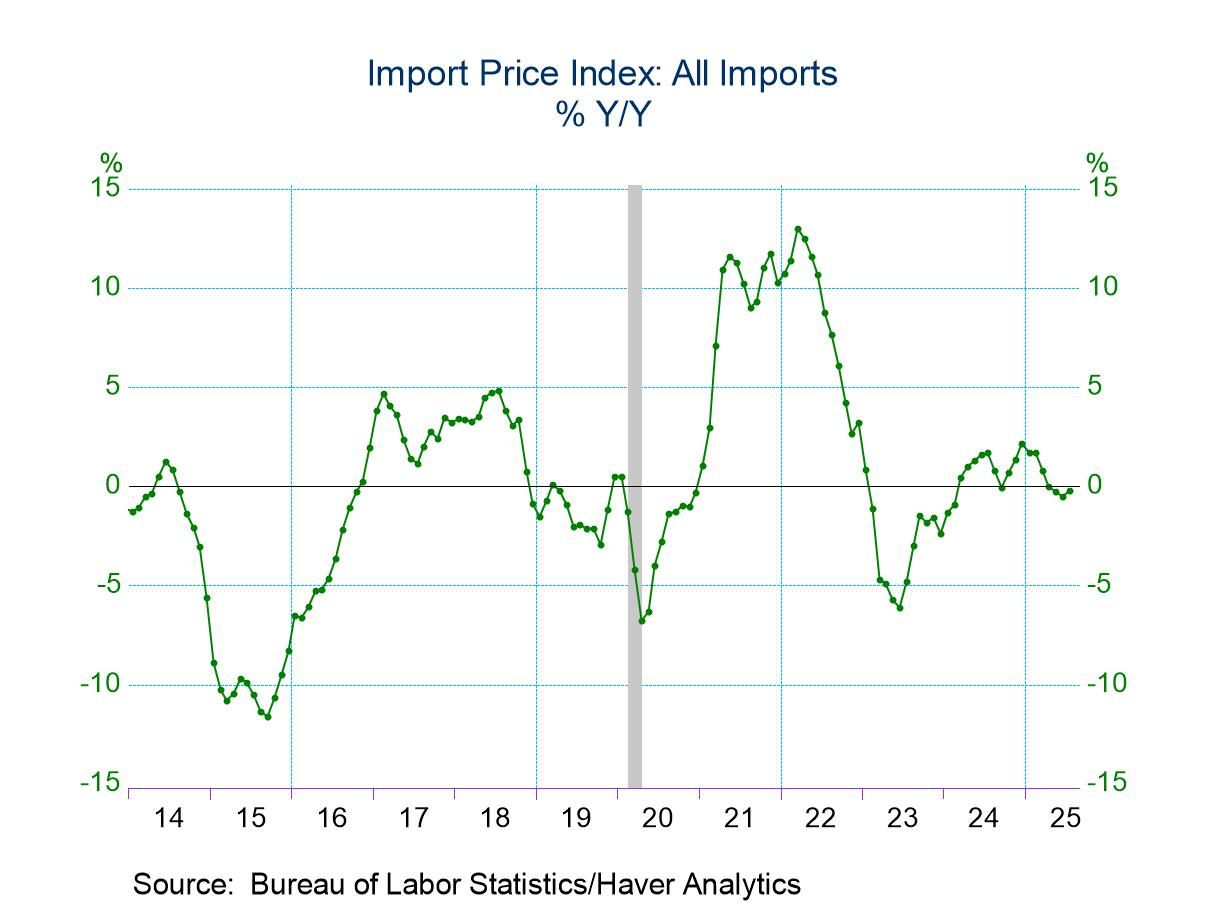
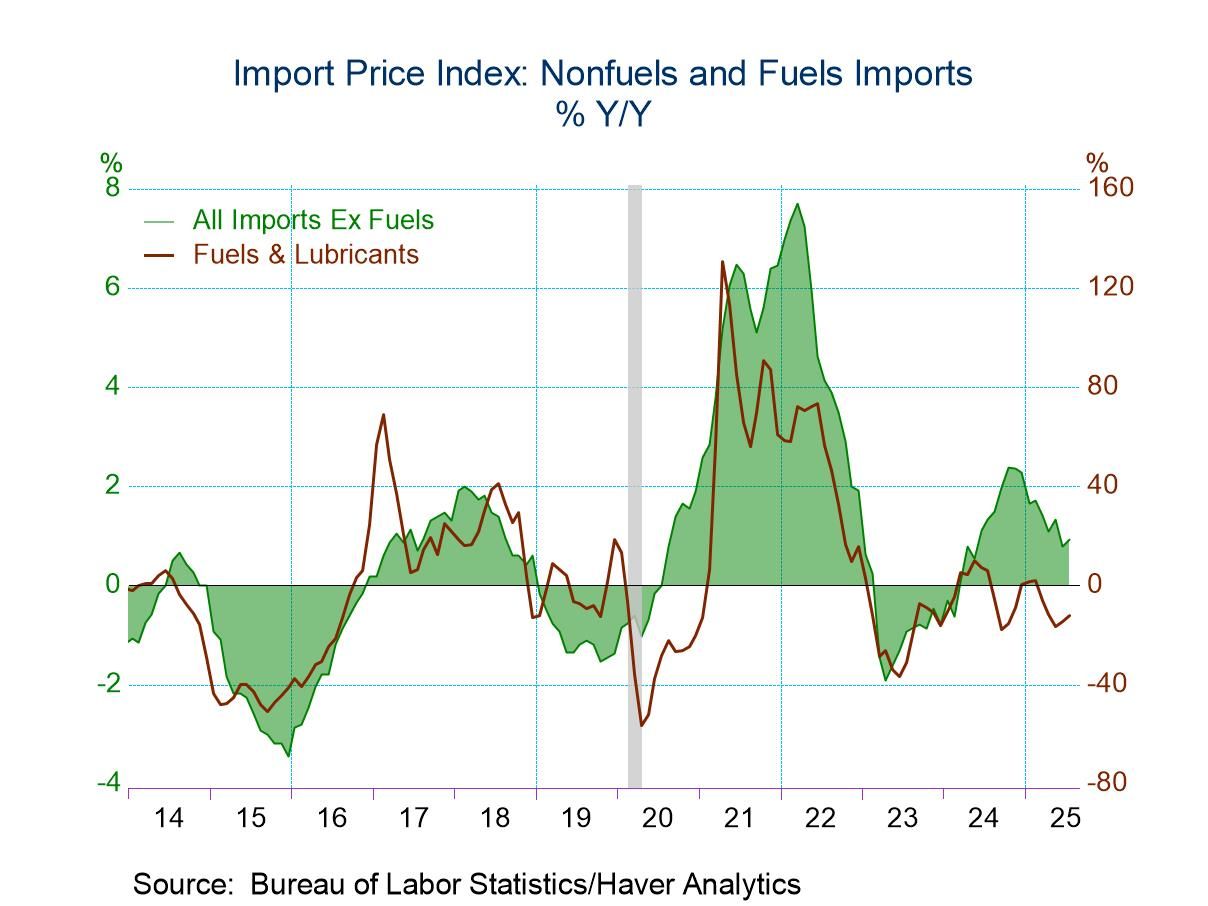
Import prices unexpectedly increased 0.4% m/m (-0.2% y/y) in July after declines of 0.1% m/m in June and 0.4% m/m in May, according to the Bureau of Labor Statistics. An unchanged reading had been expected by the Action Economics Forecast Survey. Export prices edged up 0.1% m/m (2.2% y/y) in July following a 0.5% monthly gain in June. The Action Economic Forecast Survey had also looked for an unchanged reading.
For imports, prices for imported fuel advanced 2.7% m/m in July following an increase of 0.8% m/m in June and a decrease of 5.0% m/m in May. The July increase was the largest monthly advance since the index rose 3.0% m/m in January 2025. Higher prices for imported petroleum and natural gas drove the July increase, advancing 2.4% m/m and 4.7% m/m, respectively. Imported fuel prices fell 12.1% y/y in July 2025 with imported petroleum prices down 13.7% y/y while imported natural gas prices soared 62.2% y/y.
Apart from imported fuel, prices for nonfuel imports advanced 0.3% m/m percent in July, following a decrease of 0.3% m/m in June. Higher prices for nonfuel industrial supplies and materials (1.0% m/m), consumer goods (0.4% m/m), and capital goods (0.1% m/m) more than offset lower prices for automotive vehicles (-0.2% m/m) and foods, feeds, and beverages (-0.1% m/m). Nonfuel import prices increased 0.9% y/y in July and have not declined on an over-the-year basis since a 0.6% decrease in February 2024. Higher prices for nonfuel industrial supplies and materials; capital goods; and foods, feeds, and beverages contributed to the year-over-year advance.
Higher prices for nonagricultural exports drove the July increase in overall export prices. The price index for agricultural exports was unchanged in July following a 0.8% m/m increase in June. Higher prices for meat (1.1% m/m) and vegetables (3.4% m/m) lower prices for corn (-1.9% m/m) and animal feeds (-1.6% m/m). The price index for agricultural exports increased 3.4% y/y in July, the largest 12-month rise since a 5.3% y/y advance in January 2023. Nonagricultural export prices ticked up 0.1% m/m in July, after rising 0.5% m/m in June and falling 0.8% m/m in May. Higher prices for automotive vehicles (0.7% m/m), capital goods (0.2% m/m), and consumer goods (0.2% m/m) more than offset lower prices for nonagricultural industrial supplies and materials (-0.1% m/m). Prices for nonagricultural exports increased 2.0% y/y in July. Higher prices for nonagricultural industrial supplies and materials, capital goods, and automotive vehicles drove the year-over-year advance.
These import and export price series are not seasonally adjusted; they can be found in Haver’s USECON database. Detailed figures are available in the USINT database. The expectations figure from the Action Economics Forecast Survey is in the AS1REPNA database.
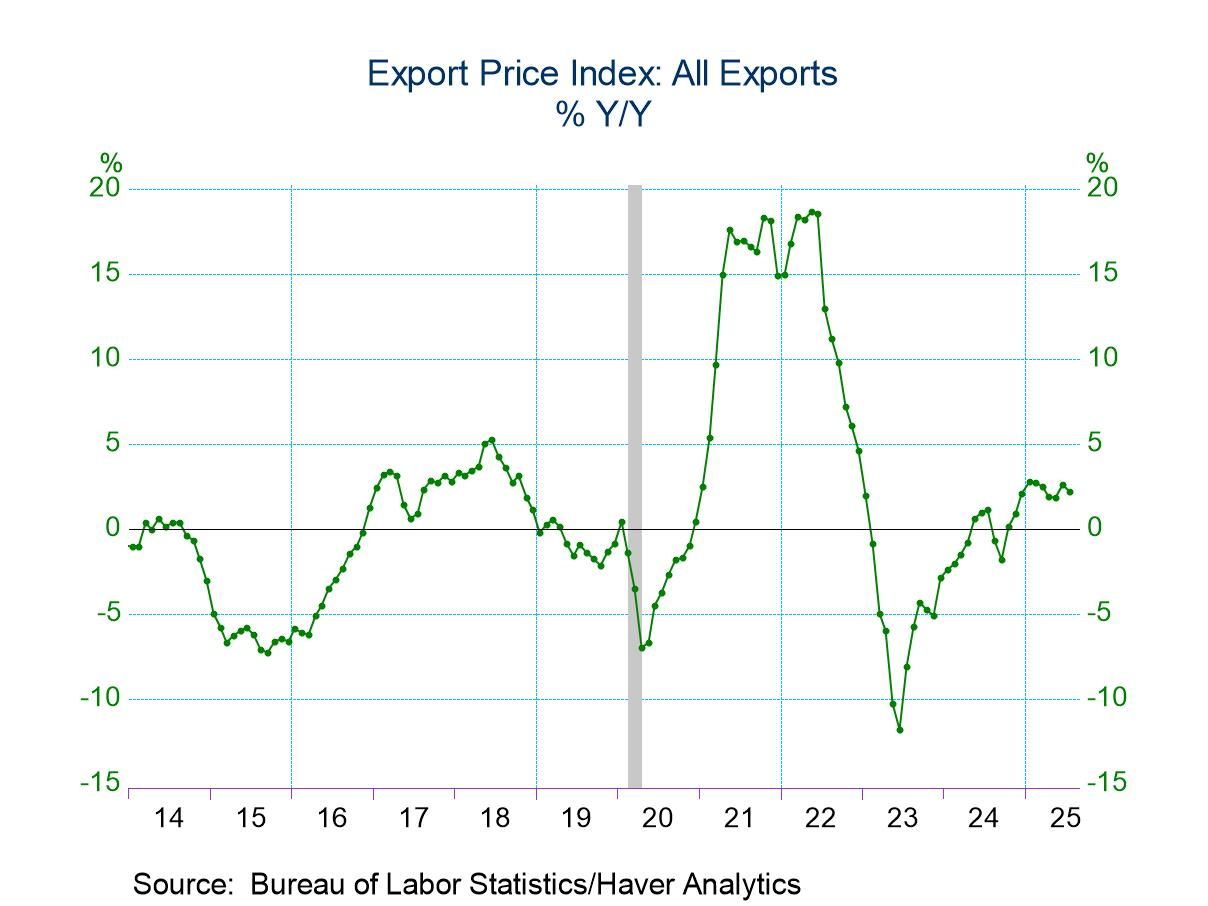
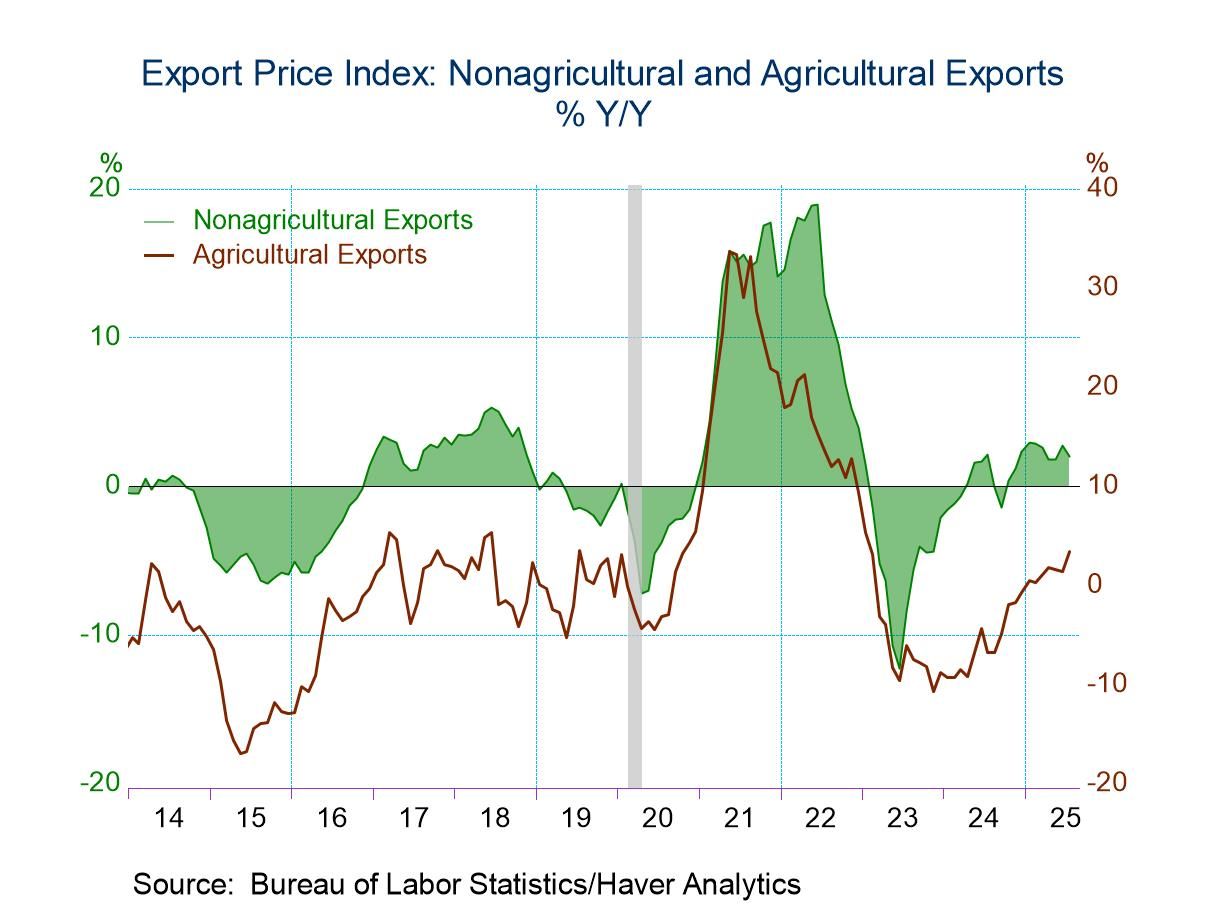
Sandy Batten
AuthorMore in Author Profile »Sandy Batten has more than 30 years of experience analyzing industrial economies and financial markets and a wide range of experience across the financial services sector, government, and academia. Before joining Haver Analytics, Sandy was a Vice President and Senior Economist at Citibank; Senior Credit Market Analyst at CDC Investment Management, Managing Director at Bear Stearns, and Executive Director at JPMorgan. In 2008, Sandy was named the most accurate US forecaster by the National Association for Business Economics. He is a member of the New York Forecasters Club, NABE, and the American Economic Association. Prior to his time in the financial services sector, Sandy was a Research Officer at the Federal Reserve Bank of St. Louis, Senior Staff Economist on the President’s Council of Economic Advisors, Deputy Assistant Secretary for Economic Policy at the US Treasury, and Economist at the International Monetary Fund. Sandy has taught economics at St. Louis University, Denison University, and Muskingun College. He has published numerous peer-reviewed articles in a wide range of academic publications. He has a B.A. in economics from the University of Richmond and a M.A. and Ph.D. in economics from The Ohio State University.



